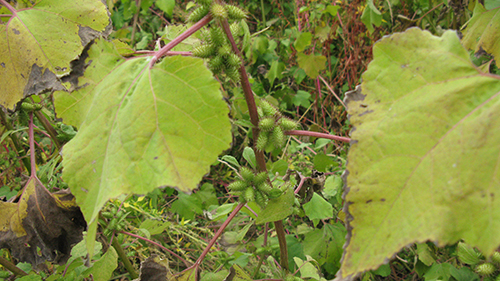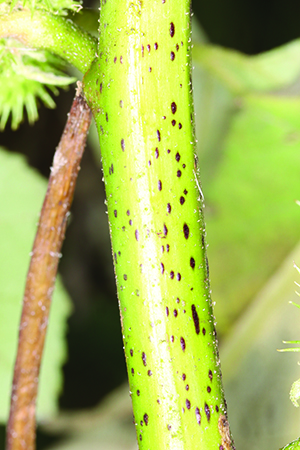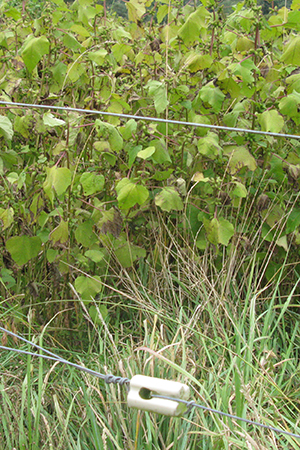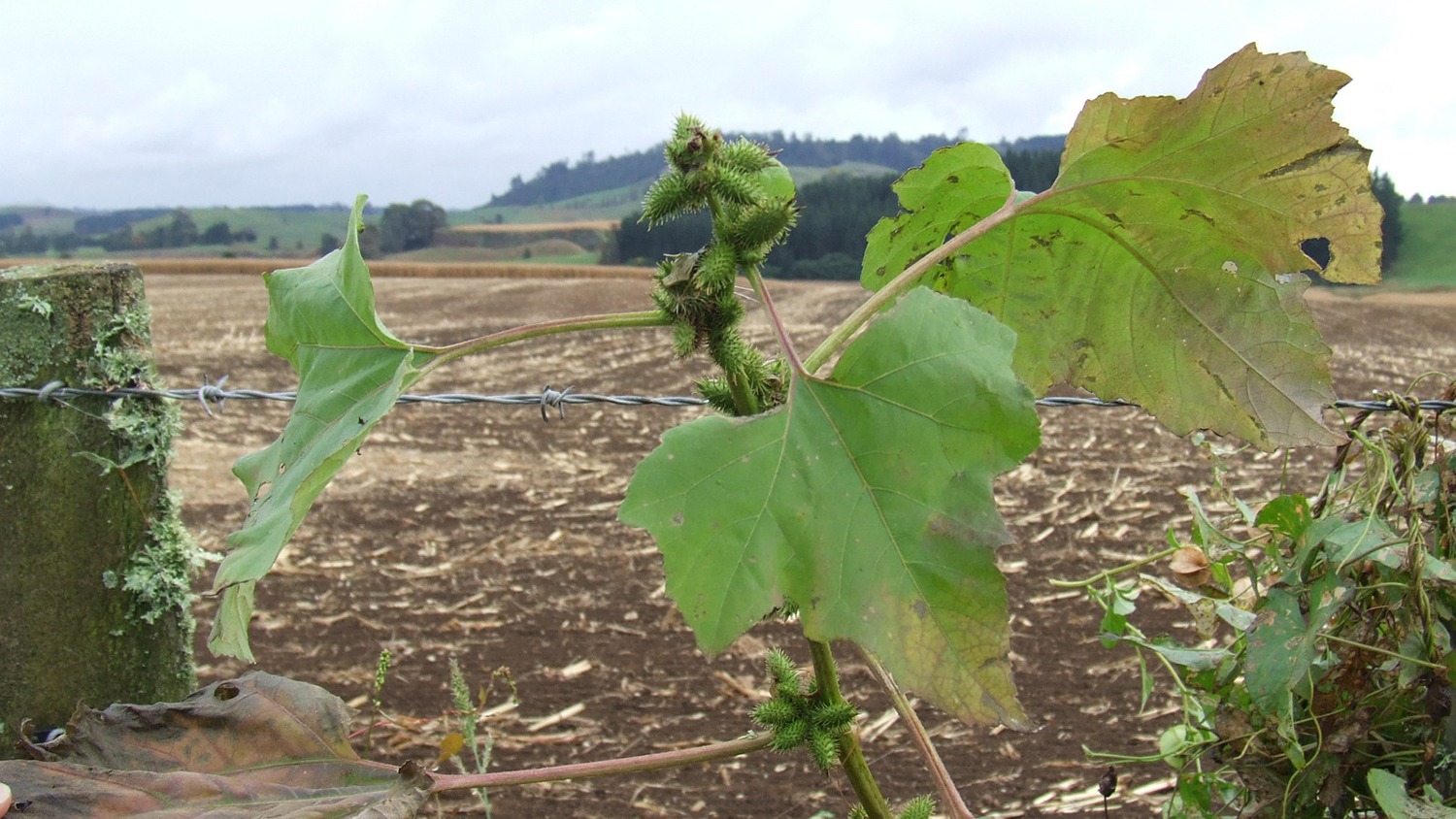| Management programme |
| Eradication |
| Objectives |
| Reduce the level of infestation of noogoora bur within the Waikato region to zero density to prevent adverse effects and impacts. |
| Impacts |
| Economic, human health, animal welfare |
Noogoora bur, native to Central and South America, was accidentally introduced to New Zealand as a contaminant in seed. It’s a serious threat to crops and pasture. It grows rapidly over late spring and summer germinating quickly after rain.

What does it look like?
Noogoora bur is an erect, fast-growing summer annual herb with a stout tap root and dense lateral root system, that can reach heights of 2m-2.5m (but is most often grows to about 1m).
Flower
- Small inconspicuous greenish-yellow flowers.
- Male flowers produced in clusters on a stalk where the leaf joins the stem.
- Female flowers are smaller at first, produced below the male flowers.
Fruit/seeds
- Oval-shaped fruit, or ‘burs’ are 7mm-20mm long.
- Burs are present in clusters of 2-13.
- Burs are covered in numerous hooked spines, with two larger straight spines at their tip.
- Each bur contains two brown, grey or black seeds.
Leaves/stems
- Leaves are 3 to 5-lobed, similar in shape to a grape or maple leaf.
- Leaves are dark green above especially towards the tips, paler below, and alternate along the stems.
- Leaf stalks are 10cm-20cm long, with redding to purple grooves.
- Leaves are coarsely toothed, with the small hairs giving them a rough texture.
- Stems have purple blotches or streaks, are zigzagged and are covered in short, coarse, upward pointing hairs.
Why is it a pest?
Noogoora bur attaches to livestock causing discomfort and injury. Burs caught in cattle hooves can result in irritation and infection, and damage sheep’s wool, lowering its value. Both the seeds and seedlings of Noogoora bur are poisonous to all livestock (especially pigs and cattle), horses and poultry. It also causes contact dermatitis in humans and animals.
Noogoora bur’s rapid growth means it can outcompete pasture and crop species. It also produces chemicals that prevent desirable species from establishing near it and can carry fungal diseases capable of infecting horticultural plants.
One single, vigorous Noogoora bur plant can produce as many 11,000 burs with the seeds able to stay in the soil for at least 6 years. It is spread by seed contaminating agricultural machinery and crops and becoming attached to livestock or clothing. Generally, Noogoora bur occurs in cropping paddocks or paddocks that have been cultivated, but it could establish anywhere in disturbed areas, along waterways or roadsides.
To date, in the Waikato region, infestations have occurred in maize cropping land in the Matamata-Piako and Waipā districts. Infestations in the Bay of Plenty region have the potential to spread to the Waikato.
Tips - stop the spread


Noogoora bur can spread by soil movement, stock feed and equipment such as diggers, crop harvesting machinery and farm machinery. Take special care not to disturb it or transport it to new sites.
Farmers should protect their properties from Noogoora bur and other serious plant pests by:
- insisting all contractors practice good weed hygiene, cleaning their equipment before entering the farm
- ensuring supplementary feed brought onto the farm is weed free
- ensuring aggregates, soil and sand brought onto the farm is weed free.






To ask for help or report a problem, contact us
Tell us how we can improve the information on this page. (optional)